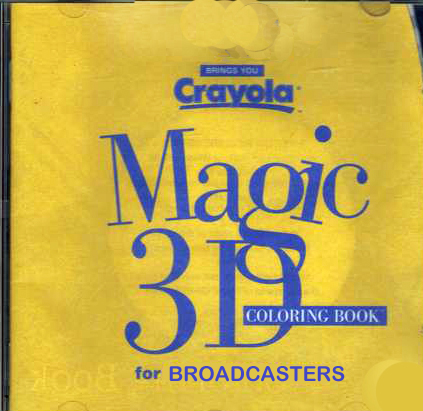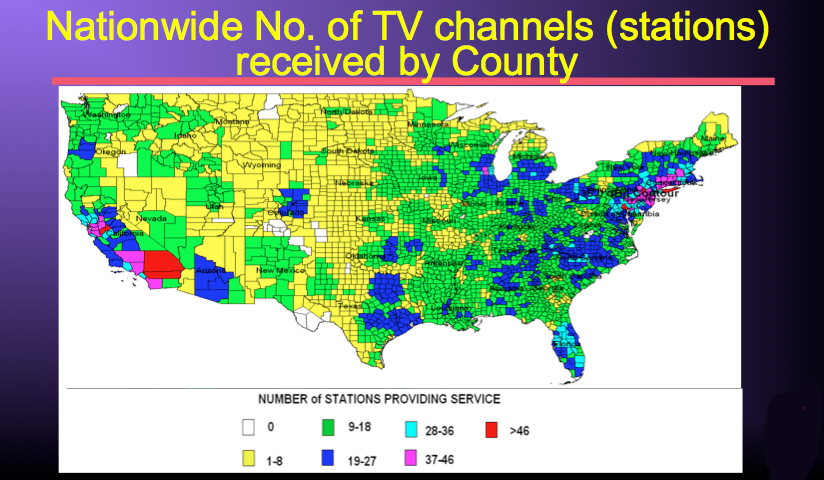3D is Conspicuously Absent at HPA Broadcast Panel

Art has seen the future, where broadcast still remains.
Tony Cole says ABC has made its loudness tame.
Jim at Fox says O-T-A is hertz conservative,
Del Parks at Sinclair says it is everywhere there is.
Disaster-proofing PBS is Jim’s next big foray.
Bob says CBS won’t give its shows away.
Mark says Mobile DTV is coming, sure as dawn.
At NBC, Jim S. says, all things there are C.A.L.M.
“But wait,” said one, “We haven’t heard a thing about 3D.
Alas, said they, we’ve not the bits to go on air
Stereo-scopic-ally.
RANCHO MIRAGE, CALIF.: The broadcaster panel has become a staple at the HPA Tech Retreat, typically drawing engineers from the Big Four, plus PBS, the National Association of Broadcasters, Sinclair and vendor Roundbox at this week’s event. Each provided a summary of what they were working on. None, as an audience member noted afterward, mentioned 3DTV.
“We don’t have enough bandwidth,” Fox’s Jim DeFilippis said.
That’s the short of it. The long if it involves the DTV transmission standard and how currently available 3DTV sets display stereoscopic images. Today’s 3DTV sets generally use a frame-compatible format by which dual images are displayed side-by-side and viewed through shutter glasses that rapidly block out one and then the other. The slightly different views create an illusion of three dimensionality. If broadcasters transmitted content in frame-compatible 3D, everyone with a non-3DTV would see dual images on the screen. To accommodate everyone, they’d have to squeeze both a 2D and a 3D video feed into their 6 MHz channels. It’s not impossible per se, but at an undesirable loss to image quality because broadcasting effectively is tied into MPEG-2 video compression under the Advanced Television Systems Committee standard.
The other most common way of conveying 3DTV is more bandwidth efficient. This “service-compatible” format supports 3D through the addition of data to the 2D signal. One popular form of service-compatible is called “2D Plus Delta,” says video expert and HPA Tech Retreat Program Maestro, Mark Schubin. “Everyone gets the left-eye view. The right-eye view gets electronically ‘subtracted’ from the left-eye-view to create a difference signal or delta. The delta gets encoded and transmitted.”
European broadcasters favored the service-compatible format for delivery of 3DTV, though a frame-compatible standard recently was adopted.Broadcasters in the United States are in the meantime dealing with headwinds in the form of the National Broadband Plan, which calls for opening 40 percent of the TV spectrum for wireless broadband.
Nonetheless, said the NAB’s Art Allison, “terrestrial transmission is here to stay,” in the form of HDTV, HD Radio, multicasting and Mobile DTV.Interactivity is on the horizon. Allison said the ATSC standard for non-real-time file transfer services is expected “any day.” The body is also working on advanced codecs, ’Net-connectivity in TVs, content protection and . . . broadcast 3DTV!
Jim DeFilippis of Fox also gave broadcasting a general shout-out. Addressing the federal campaign to relieve broadcasters of spectrum, he proposed a “new metric” for determining spectrum efficiency: “Viewers per hertz.”
“There’s a notion broadcasters are spectrum hogs,” he said. “Broadcasting can provide approximately 1 viewer/Hz. LTE proposes using 10 MHZ for 1,500 viewers, or 150 microviewers.”
The metric proved popular in a ballroom full of engineers.
DeFilippis later said Fox is focusing on launching Mobile DTV this year in 20 TV markets “with a MCV ATSC Mobile DTV signal.” MCV being Mobile Content Venture, the consortium of networks and TV station groups promoting the platform. Fox will launch Mobile with a simulcast of the main channel, and set aside bandwidth for possible new services.
Mark Ruston of Roundbox rounded up Mobile DTV during the panel session. He said that content rights were still being worked out for the platform, but that agreements were being reached. PBS’s Jim Kutzner said three public stations are on the air with mobile signals and another 20 would be up by mid-2011. NBC’s Jim Starzynski said the network had 10 owned-and-operated stations on the air as well as five Telemundos. CBS’s approach to new platforms is measured, or rather, it must be.
“For alternative distribution, if CBS can authenticate the audience, it will participate,” the network’s Robert Seidel said. “We do not give our content away.”
Nor is CBS about to voluntarily give spectrum away, as the Federal Communications Commission is now urging broadcasters to do.At least not from the impression Mister Seidel left at the Retreat. CBS analyzed the occupancy rate of TV channels by county on a nationwide basis. (Story continues below.)
“Very little is available major metro areas,” he said.The nation’s largest TV market, New York City, has 65 digital full-power, Class A , low-power and translator TV stations. No. 2 Los Angeles has 154. (The map at right shows only the count for full-power and Class A stations.) CBS concluded that “reclaiming broadcast spectrum in the major metro areas will not be possible.”
Seidel also touched on CBS’s compliance with the Commercial Advertisement Loudness Mitigation Act, signed into law last year. CALM requires TV providers to even out the volume between shows and commercials. The law directs the FCC to adopt rules based on the ATSC’s A/85 Recommended Practice for loudness mitigation by December of 2012.
NBC’s Jim Starzynski said the ATSC was in the process of revising A/85 “to clarify the text, but will not be changing the substance of the Recommended Practice.” NBC runs ads through a Telestream scaler to determine how far they are from network’s target metric. Most are out of spec, he said.
Tony Cole of ABC said an in-house loudness verification standard had been developed there, and that A/85 was in the process of being adopted. He said meters were being rolled out in New York and Los Angeles at all ingest and content creation centers.
The migration to file-based workflows continues at PBS. Kutzner said the Next-Gen Interconnection System, which moved PBS from satellite signal distribution to a hybrid satellite/fiber system, is now in alpha testing. The intent is to expand file delivery to distribution outlets and eventually to automate it completely.
PBS also is building a disaster recovery site with remote controllability “elsewhere in the country,” to be completed in next 18 months, he said. In other arenas, a Public Television Quality Group was created to improve the technical quality of high-definition material, and the development of COVE--Comprehensive Online Video Ecosystem--“a sort of Hulu for PBS affiliates,” continues, Kutzner said.
Del Parks of Sinclair spoke to “the importance of local affiliates to networks.” Sinclair owns and/or operates 58 TV stations in 35 markets. Parks said it’s commonly assumed that 90 percent of the country gets TV by cable, fiber or satellite. He called it a “flawed conclusion. . . . When you look at Nielsen numbers, it doesn’t translate to 90 percent everywhere.” Actual reliance on over-the-air TV varies widely from market to market, he noted. In Baltimore, where Sinclair is based, 5 percent of TV households tune in over the air. In Minneapolis, the figure is 18 percent.
“So in Minneapolis, the ABC station gets nearly a quarter of its total day viewing from OTA households,” he said. “The CW stations gets a third of its ratings from OTA HHs and no local major broadcast station gets less than 18 percent.”
Deborah D. McAdams

The professional video industry's #1 source for news, trends and product and tech information. Sign up below.
